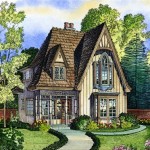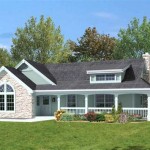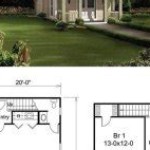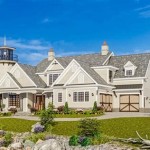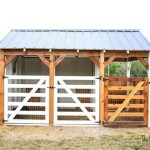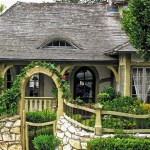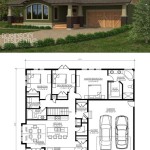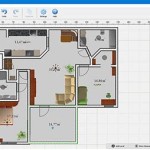Bluebird House Plans refer to detailed blueprints and instructions that guide the construction of nesting boxes specifically designed to attract and accommodate bluebirds, a beloved species of North American songbirds. These plans provide guidance on choosing appropriate materials, dimensions, placement, and construction techniques to ensure the optimal comfort and safety of the nesting birds.
Bluebird houses are typically mounted on posts or trees in open areas with good visibility, as these birds prefer nesting in locations that offer protection from predators and easy access to foraging grounds. By providing a safe and suitable nesting environment, bluebird house plans contribute to the conservation and well-being of these charming and beneficial birds.
In the following sections, we will delve into the details of bluebird house plans, exploring the essential features, materials, and construction guidelines that are crucial for creating effective and inviting nesting spaces for these avian residents.
Here are eight essential points to consider when working with bluebird house plans:
- Appropriate dimensions
- Suitable entrance hole size
- Predator guards or baffles
- Proper ventilation
- Drainage holes
- Non-toxic materials
- Proper placement
- Regular monitoring and maintenance
By carefully considering these factors, you can create effective and inviting nesting spaces for bluebirds, supporting their conservation and bringing joy to your outdoor space.
Appropriate dimensions
The dimensions of a bluebird house are crucial to ensure the comfort and safety of its avian occupants. The internal space should be large enough to accommodate a nesting pair and their young, but not so large that it becomes drafty or difficult to defend against predators. The following dimensions are generally recommended for bluebird houses:
- Floor space: 5 inches x 5 inches (13 cm x 13 cm)
- Height: 6 inches to 8 inches (15 cm to 20 cm) from the floor to the top of the nesting chamber
- Entrance hole diameter: 1.5 inches (3.8 cm)
- Depth of the nesting chamber: 3 inches to 4 inches (8 cm to 10 cm) below the entrance hole
It is important to note that these dimensions are approximate and can be adjusted slightly to accommodate different species of bluebirds or regional variations. For example, Eastern Bluebirds typically prefer nesting boxes with slightly larger dimensions than Western Bluebirds. It is always advisable to consult with local experts or ornithological organizations for specific recommendations based on the species and location.
Suitable entrance hole size
The size of the entrance hole in a bluebird house is a critical factor that directly impacts the safety and nesting success of the birds. It must be large enough to allow bluebirds to enter and exit the box easily, but small enough to deter predators such as cats, squirrels, and snakes from entering. The ideal entrance hole diameter for a bluebird house is 1.5 inches (3.8 cm). This size is large enough for bluebirds to pass through comfortably, but too small for most predators to fit through.
The placement of the entrance hole is also important. It should be centered on the front of the box and located about 6 inches (15 cm) above the floor. This placement helps to prevent predators from reaching into the box and grabbing the nestlings or eggs. It also provides some protection from the elements, such as rain and wind.
In addition to the size and placement of the entrance hole, it is also important to consider the shape of the hole. A round entrance hole is generally preferred over a square or oval hole, as it is more difficult for predators to enlarge. You can also install a predator guard or baffle around the entrance hole to provide additional protection.
By carefully considering the size, placement, and shape of the entrance hole, you can create a bluebird house that is both inviting to bluebirds and safe from predators.
Predator guards or baffles
Predator guards or baffles are devices that are installed around the entrance hole of a bluebird house to deter predators from entering. They are typically made of metal or plastic and have a variety of designs. Some common types of predator guards include:
- Metal cones: These are cone-shaped devices that are placed over the entrance hole. They prevent predators from reaching into the box, but allow bluebirds to enter and exit easily.
- Baffles: These are flat panels that are placed in front of the entrance hole. They make it difficult for predators to reach the entrance hole, but do not block the bluebirds’ access.
- Perches: These are small perches that are placed near the entrance hole. They provide a place for bluebirds to land before entering the box, which makes it more difficult for predators to catch them.
Predator guards or baffles can be an effective way to deter predators from entering bluebird houses. However, it is important to choose a guard or baffle that is designed specifically for bluebird houses, as some guards or baffles may not be effective or may even harm the birds. It is also important to install the guard or baffle correctly, according to the manufacturer’s instructions.
In addition to predator guards or baffles, there are other things you can do to help protect bluebirds from predators, such as placing the bluebird house in a location that is not easily accessible to predators, such as on a post or in a tree. You can also monitor the bluebird house regularly for signs of predators, such as tracks or droppings, and take steps to deter predators if necessary.
Proper ventilation
Proper ventilation is essential for the health and well-being of bluebirds and their young. A well-ventilated bluebird house will help to prevent the build-up of moisture and mold, which can cause respiratory problems and other health issues for the birds. Proper ventilation will allow fresh air to circulate through the box, which will help to keep the birds cool in the summer and warm in the winter.
- Ventilation holes: Ventilation holes should be placed near the top of the back of the box, opposite the entrance hole. The holes should be about 1/2 inch (1.3 cm) in diameter and should be covered with wire mesh to prevent predators from entering.
Note: Do not place ventilation holes in the floor of the box, as this can allow water to enter the box and cause the nest to become wet and cold.
- Orientation of the box: The bluebird house should be oriented so that the entrance hole faces away from the prevailing wind. This will help to prevent drafts from entering the box and chilling the birds.
- Avoid overcrowding: It is important to avoid overcrowding bluebird houses. If too many birds are nesting in a single box, there may not be enough ventilation for all of the birds, which can lead to health problems.
- Clean the box regularly: Bluebird houses should be cleaned regularly to remove old nesting material and other debris. This will help to prevent the build-up of moisture and mold.
By following these tips, you can ensure that your bluebird house is properly ventilated, which will help to keep the birds healthy and comfortable.
Drainage holes
Drainage holes are essential for preventing water from accumulating in the bluebird house. Water can damage the nest and nesting material, and it can also lead to the growth of mold and bacteria. Drainage holes allow water to drain out of the box, which helps to keep the nest dry and clean.
- Number and placement: There should be at least two drainage holes in the floor of the bluebird house. The holes should be placed on opposite sides of the box, near the back. This will allow water to drain out of the box regardless of which way the box is facing.
Note: Do not place drainage holes in the sides of the box, as this can allow water to enter the box when it is raining. Drainage holes should also not be placed too close to the entrance hole, as this can allow predators to enter the box.
- Size: The drainage holes should be about 1/2 inch (1.3 cm) in diameter. This is large enough to allow water to drain out of the box, but small enough to prevent predators from entering.
- Covering the holes: The drainage holes should be covered with wire mesh to prevent predators from entering. The wire mesh should be small enough to prevent predators from getting through, but large enough to allow water to drain out of the box.
- Cleaning the holes: The drainage holes should be cleaned regularly to prevent them from becoming clogged with debris. This will help to ensure that water can drain out of the box properly.
By following these tips, you can ensure that your bluebird house has adequate drainage, which will help to keep the nest dry and clean and prevent the growth of mold and bacteria.
Non-toxic materials
It is important to use non-toxic materials when building a bluebird house. Bluebirds are sensitive to chemicals and fumes, and exposure to toxic materials can cause health problems, including respiratory issues, reproductive problems, and even death. Some common toxic materials that should be avoided include:
- Creosote: Creosote is a wood preservative that is toxic to birds. It can cause respiratory problems, skin irritation, and even cancer. Avoid using creosote-treated wood for any part of the bluebird house.
- Pentachlorophenol (penta): Penta is a wood preservative that is also toxic to birds. It can cause respiratory problems, liver damage, and reproductive problems. Avoid using penta-treated wood for any part of the bluebird house.
- Copper: Copper is a metal that is toxic to birds. It can cause liver damage, kidney damage, and reproductive problems. Avoid using copper nails, screws, or other hardware on the bluebird house.
- Lead: Lead is a metal that is toxic to birds. It can cause neurological problems, kidney damage, and reproductive problems. Avoid using lead-based paint or other lead-containing materials on the bluebird house.
Instead of using toxic materials, opt for non-toxic alternatives such as:
- Untreated wood: Untreated wood is the best choice for building a bluebird house. It is non-toxic and will not harm the birds.
- Cedar: Cedar is a naturally rot-resistant wood that is also non-toxic to birds. It is a good choice for building bluebird houses that will last for many years.
- Pine: Pine is another good choice for building bluebird houses. It is non-toxic and relatively inexpensive. However, pine is not as rot-resistant as cedar, so it may need to be replaced more often.
- Non-toxic paint: If you want to paint your bluebird house, be sure to use a non-toxic paint. Look for paints that are specifically labeled as “non-toxic” or “bird-safe.” These paints will not harm the birds if they come into contact with them.
By using non-toxic materials, you can create a safe and healthy home for bluebirds.
Proper placement
Proper placement of a bluebird house is crucial for its success. The location should provide the birds with a safe and comfortable place to nest, as well as protection from predators and the elements. Here are some important factors to consider when choosing a location for your bluebird house:
1. Height
Bluebird houses should be placed at a height of 5 to 6 feet (1.5 to 1.8 meters) above the ground. This height provides the birds with a good view of their surroundings and helps to protect them from predators. Avoid placing the house too high, as this can make it difficult for the birds to access.
2. Orientation
The entrance hole of the bluebird house should face east or southeast. This orientation provides the birds with protection from the prevailing wind and rain. Avoid placing the house in a location that is exposed to strong winds or direct sunlight.
3. Visibility
Bluebirds prefer to nest in locations that are open and have good visibility. Choose a location that is free of obstructions, such as trees or shrubs, that could block the birds’ view. This will help the birds to spot predators and potential nesting sites.
4. Proximity to water and food
Bluebirds need access to water and food for both themselves and their young. Choose a location that is near a water source, such as a birdbath or pond. The birds will also appreciate having access to a nearby source of food, such as a bird feeder or insect-rich habitat.
In addition to these factors, it is also important to consider the specific needs of the bluebird species that you are targeting. For example, Eastern Bluebirds prefer to nest in open areas, such as fields or meadows. Western Bluebirds, on the other hand, prefer to nest in more wooded areas. By taking the time to choose the right location for your bluebird house, you can increase the chances that the birds will find and use it.
Regular monitoring and maintenance
Regular monitoring and maintenance are essential to ensure that your bluebird house remains a safe and comfortable home for its avian occupants. Here are some important tasks to keep in mind:
1. Inspect the house regularly
Inspect the bluebird house regularly for any signs of damage or wear. Check for cracks, holes, or other openings that could allow predators to enter. Also, check the entrance hole to make sure that it is not clogged with debris or cobwebs. If you find any damage, repair it promptly to prevent the house from becoming unusable.
2. Clean the house annually
Once a year, thoroughly clean the bluebird house to remove old nesting material, droppings, and other debris. Use a mild soap and water solution and a soft brush to clean the interior of the house. Be sure to rinse the house thoroughly and allow it to dry completely before replacing it.
3. Monitor for predators
Keep an eye out for predators, such as cats, squirrels, and snakes. If you see any predators around the bluebird house, take steps to deter them. You can install predator guards or baffles around the entrance hole, or you can place the house in a location that is less accessible to predators.
4. Monitor for parasites
Bluebirds can sometimes be affected by parasites, such as mites and fleas. If you see any signs of parasites, such as excessive scratching or feather loss, take steps to treat the birds. You can use a commercial bird spray or dust to kill the parasites. Be sure to follow the instructions on the product label carefully.
By following these simple tips, you can help to ensure that your bluebird house provides a safe and healthy home for its avian occupants for many years to come.










Related Posts

